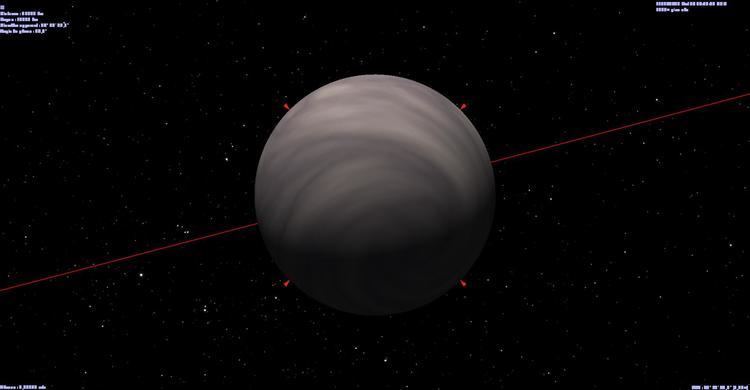ARICNS data | Magnitude 5.71 Apparent magnitude (V) 5.71 | |
 | ||
People also search for HD 187123, Pi2 Cygni, 17 Cygni | ||
Gliese 777 andrew buckner
Gliese 777, often abbreviated as Gl 777 or GJ 777, is a yellow subgiant approximately 52 light-years away in the constellation of Cygnus. The system is also a binary star system made up of two stars and possibly a third. As of 2005, two extrasolar planets are known to orbit the primary star.
Contents
Stellar components
The primary star of the system (catalogued as Gliese 777A) is a yellow subgiant, a Sun-like star that is ceasing fusing hydrogen in its core. The star is much older than the Sun, about 6.7 billion years old. It is 4% less massive than the Sun. It is also rather metal-rich, having about 70% more "metals" (elements heavier than helium) than the Sun, which is typical for stars with extrasolar planets.
The secondary star (Gliese 777B) is a distant, dim red dwarf star orbiting the primary at a distance of 3,000 astronomical units. One orbit takes at least tens of thousands of years to complete. The star itself may be a binary, the secondary being a very dim red dwarf. Not much information is available on the star system.
Planetary system
In 2002 a discovery of a long-period, wide-orbiting planet (Gliese 777b) was announced by the Geneva extrasolar planet search team. The planet orbited in circular path and the orbital eccentricity was increased in later measurements (e=0.36). The planet was "Jupiter-twin" and was turned to "eccentric Jupiter" with mass about 1.5 times Jupiter and about the same size. In 2005 further observation of the star show another amplitude with a period of 17.1 days. This indicates one of the smallest discovered planets at the time. The mass was only 18 times more than Earth or about same as Neptune with very low eccentricity. There was a METI message sent to Gliese 777. It was transmitted from Eurasia's largest radar, 70-meter Eupatoria Planetary Radar. The message was named Cosmic Call 1; it was sent on July 1, 1999, and it will arrive at Gliese 777 in April 2051.
